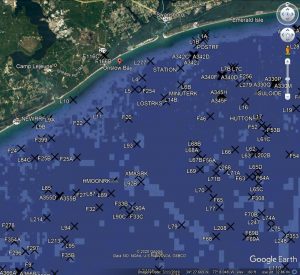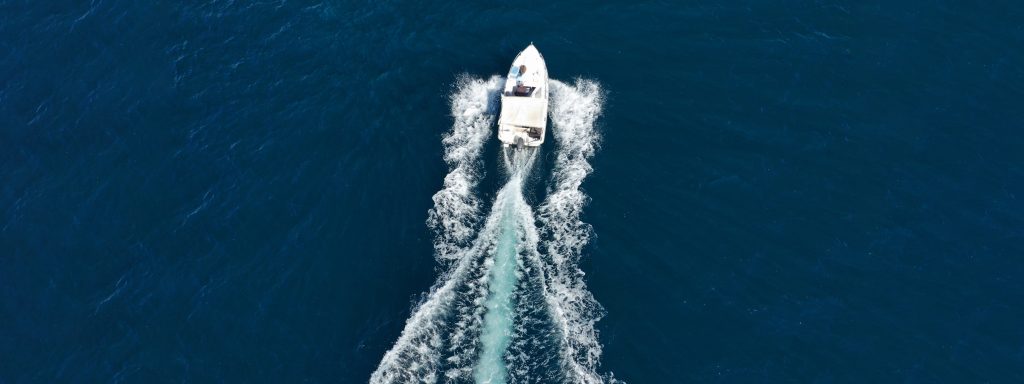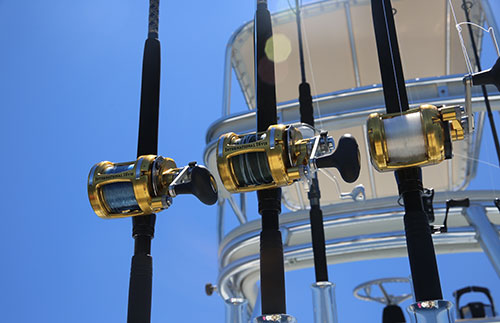Making The Shift From Inshore To Offshore Fishing…..The Trend
The sport of saltwater fishing has faced many challenges in recent years. We have seen a massive population surge along the eastern coast of the United States especially the southern coast. Many northern residents seek a warmer climate and lower cost of living than that found in the northern and colder regions of the country. The results are more fishing and more pressure along the southeastern seaboard, also resulting in tighter fishing regulations and a greater focus for many southern states on conservation. This has started a slow but sure shift in where anglers along the southern coast fish and what they fish for. This gradual shift takes what was once an avid inshore fisherman now working his way out the inlets and further offshore, fishing for species other than Redfish, Speckled Trout, and Flounder. This is seen especially in areas like North Carolina, where the state’s recreational Flounder fishing has been limited to only 14 days per year, with a potential total moratorium on the horizon. Neighboring South Carolina has tightened Flounder regulations as well, but not to the extent of their neighboring state to the north.
Why the Shift
The shift offshore has taken place due to multiple but subtle reasons. Anglers are looking for fishing options that are less pressured and more likely to hold a greater amount of fish and in many cases, larger fish. Moving out of the inlets offers a larger area of fishing, with less fishing activity and boating traffic. There are more and larger species and fewer regulatory restrictions in most cases.
Impact of Improved Boats
Over the recent years, the large and small boats have seen a significant quality improvement. This is particularly seen with boat engines. They are more dependable and allow the angler to venture offshore with confidence. In addition to dependability, today’s smaller boats are more comfortable and offer many of the features the larger boats have had for years.
Electronics and Navigation Options Are Game Changers

Developments in navigation electronics in recent years have been phenomenal. Today, small boat anglers have access to most of the great navigation options that have only been available to the larger boats in past years. These new-age GPS units combined with the smart chip by the Nav-Unique can place the small boat owner on thousands of underwater reefs, structures, and live bottoms that hold fish. The cost of the chip is less than $200 and just inserts into most GPS units. Combining this product with the relatively new “spot lock” features on many trolling motors allows the smaller boat to hover over a specific site without the need to set and recover the anchor.

ROFFS™ Analysis
Another game-changer is the satellite images provided by companies such as ROFFS™ that give detailed information on offshore water temps and movement. Their information includes ocean temperature breaks and the movement of those breaks which is a key indicator of where the fish are feeding and migrating. This service has been popular with larger boat captains for many years and now becoming popular with smaller boat anglers as well. While the cost may seem somewhat high, when factored with today’s fuel cost, it’s actually a money saver. Today, ROFFS™ has tailored packages for the nearshore anglers that start just a few miles off the beaches along the eastern coast.
Safety Improvements
![]()
Today’s boats are definitely built safer than those of years past thanks to technology. We also find a great number of safety products available to the small boat fisherman such as improved life vests. The inflatable harness PFD is a must when fishing both nearshore and offshore. Products like the personal EPRIP have greatly improved as well in recent years making offshore fishing safer for large or small boats.
How To Start
Take an inventory of your boat and gear. First and foremost, make sure you’ve got the safety gear needed. Don’t go cheap in this area, your life depends on it. Second, make sure your boat is in great running order and that you know the fuel range of your boat. Make sure to allow for the arrival of heavy seas that can increase your fuel consumption. Thirdly, Check your VHF range to confirm that your radio will reach far enough to call for help if needed. Many inshore boats have short antennas and only broadcast a few miles.
And fourthly, make sure you have access to the information you need to find the fish. This includes knowing where fish habitats are and when the fish are there. Now load your GPS with all of those great structures and bottoms where the fish eat and protect themselves. Then, get a report to find what the water is doing. That will tell you when and where to go.
It’s a whole new world out there. Be safe and fish hard.

Most from this category







